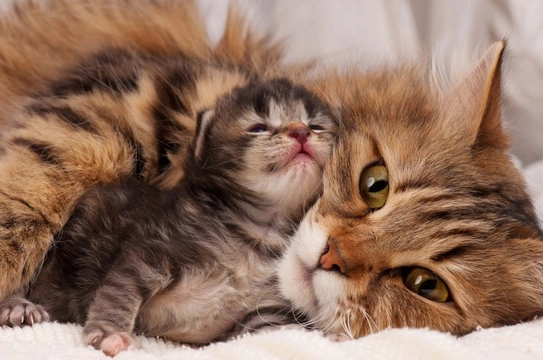Pets
Pets for studWanted petsBreedersAccessories & services
Knowledge hub
Support
Support & safety portal
Caring for a cat that has just delivered a litter
If you own a pedigree cat that you wish to breed from, one of the most exciting things about the whole process is getting to be the first person to see the brand new kittens that are coming into the world, and if you are lucky, actually witnessing the birth itself.
Just as is the case with all animals, cats have been giving birth all on their own with no human assistance for millennia, and it is rare for something to go wrong that requires supervision or intervention. However, just to be on the safe side, it is a good idea to get a basic understanding of how to supervise and care for a cat that has just had a new litter, and some of the problems to keep an eye out for. Read on to learn more about the basics of caring for a cat that has just delivered a litter.
How to tell when labour has finished
Identifying when a queen has delivered the final kitten she is going to have or if there is another one or two to come can be difficult, but there are various different indications that you can keep an eye out for. Bear in mind that your queen may have several breaks in between delivering each kitten, and a gap of half an hour or more between kittens is not uncommon.
Your cat’s stomach, which will have been distended with the litter prior to delivery is likely to become much flatter again when all of the kittens are out, and the queen is likely to be relaxed and paying attention to the new deliveries.
If you think delivery has finished and the queen is calm and happy, not showing any signs of pain, straining or problems with delivery, the chances are that she is done-but don’t be entirely surprised if you count an extra little one later on!
Delivering the placentas
Every kitten in the womb will have a placenta, and these are delivered either along with or just after the kittens. Keep an eye on the number of placentas that your cat has delivered, as the number should match the number of kittens. Sometimes the placental delivery will come some time after the kitten, but rarely more than half an hour later.
If you have more kittens than you have placentas for, monitor this carefully as a retained placenta can cause problems and may require veterinary attention.
Cleaning up
When the queen has finished delivering all of her kittens, remove the soiled bedding and replace it with new. Try to do this with the minimum amount of disruption to the queen and the litter, and wait a while after the birth if necessary.
Feeding the cat and the kittens
The kittens are likely to start seeking out the queen’s teats and nuzzling for milk not long after they are born, so keep an eye out to ensure that the queen’s milk has descended and that all of the kittens are being fed.
Keep a particular eye out for any kittens that cannot latch on or that are being pushed out of the way by the other kittens, as these kittens may need help to ensure that they get enough milk!
What and how you feed your queen whilst she is nursing the kittens is important too-your cat will require anything from double to three times as many calories as she normally would, so be prepared for this and allow your cat to free-feed to her satisfaction, and do not limit or restrict food.
There are several diets designed specifically to fulfil the needs of nursing queens and support her milk production, so decide on the most appropriate one before delivery. Your cat should always have free access to clean water along with her food.
Your queen’s reproductive health after delivery
It is a good idea to have your vet give the queen and her litter a basic check-up a day or two after delivery, to ensure that the queen and the litter are thriving and that there are no undelivered kittens or placentas remaining that may cause a problem later on.
In the week or so following the birth itself, your queen is likely to have a slight vaginal discharge that is the colour of dried blood, and this is totally normal and rarely becomes a problem.
There should be no foul smell to the discharge, and it should not be bright red (fresh blood) nor continue past around the two week mark after delivery. If you spot any anomalies, contact your vet as there may be something amiss.
The next season
Queens often come into season very soon after delivery, and this is especially likely to happen if you also keep unneutered male cats, as their hormone levels can trigger a season.
This means that you must keep your queen away from unneutered males during this time, and if you plan to spay your queen after this litter, you may wish to arrange for this to happen a few weeks after the litter is born.



